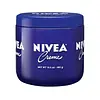What's inside
What's inside
 Key Ingredients
Key Ingredients

No key ingredients
 Benefits
Benefits

 Concerns
Concerns

 Ingredients Side-by-side
Ingredients Side-by-side

Water
Skin ConditioningGlycerin
HumectantDimethicone
EmollientLimnanthes Alba Seed Oil
Skin ConditioningHydrogenated Polyisobutene
EmollientJojoba Esters
EmollientHelianthus Annuus Seed Wax
Skin ConditioningOctyldodecanol
EmollientIsomalt
HumectantPassiflora Incarnata Seed Oil
Skin ProtectingEthylhexyl Palmitate
EmollientCetearyl Glucoside
EmulsifyingCetearyl Alcohol
EmollientButyrospermum Parkii Butter
Skin ConditioningGlycoproteins
Skin ConditioningPanax Ginseng Root Extract
EmollientEquisetum Arvense Extract
AstringentGold
Cosmetic ColorantPaeonia Albiflora Root Extract
Skin ConditioningCynara Scolymus Leaf Extract
Skin ConditioningPaeonia Lactiflora Root Extract
Skin ConditioningCoffea Arabica Seed Extract
MaskingGlycyrrhiza Glabra Root Extract
BleachingSaccharomyces Cerevisiae Extract
Skin ConditioningBeeswax
Emulsion StabilisingRubus Idaeus Seed Oil
EmollientCarnosine
Skin ConditioningLactobacillus Ferment
Skin ConditioningPalmitoyl Tetrapeptide-10
Skin ConditioningCysteine
AntioxidantPhytol
EmollientTocopheryl Acetate
AntioxidantSodium Stearoyl Glutamate
CleansingEthylhexylglycerin
Skin ConditioningPhospholipids
Skin ConditioningTocopherol
AntioxidantSodium Hyaluronate
HumectantAscorbyl Palmitate
AntioxidantTrehalose
HumectantSoy Isoflavones
Skin ConditioningSodium Chloride
MaskingCaprylyl Glycol
Emollient1,2-Hexanediol
Skin ConditioningXanthan Gum
EmulsifyingTin Oxide
AbrasivePropanediol
SolventTetrasodium Glutamate Diacetate
Caprylyl/Capryl Glucoside
CleansingCalcium Sodium Borosilicate
Sodium Hydroxide
BufferingPolysilicone-11
Carbomer
Emulsion StabilisingPolysilicone-15
UV FilterSodium Acrylate/Sodium Acryloyldimethyl Taurate Copolymer
Emulsion StabilisingBatyl Alcohol
EmollientButyl Methoxydibenzoylmethane
UV AbsorberPolyisobutene
Alcohol
AntimicrobialParfum
MaskingAlpha-Isomethyl Ionone
PerfumingCitronellol
PerfumingGeraniol
PerfumingLimonene
PerfumingPhenoxyethanol
PreservativePotassium Sorbate
PreservativeSodium Benzoate
MaskingSodium Dehydroacetate
PreservativeCI 77891
Cosmetic ColorantWater, Glycerin, Dimethicone, Limnanthes Alba Seed Oil, Hydrogenated Polyisobutene, Jojoba Esters, Helianthus Annuus Seed Wax, Octyldodecanol, Isomalt, Passiflora Incarnata Seed Oil, Ethylhexyl Palmitate, Cetearyl Glucoside, Cetearyl Alcohol, Butyrospermum Parkii Butter, Glycoproteins, Panax Ginseng Root Extract, Equisetum Arvense Extract, Gold, Paeonia Albiflora Root Extract, Cynara Scolymus Leaf Extract, Paeonia Lactiflora Root Extract, Coffea Arabica Seed Extract, Glycyrrhiza Glabra Root Extract, Saccharomyces Cerevisiae Extract, Beeswax, Rubus Idaeus Seed Oil, Carnosine, Lactobacillus Ferment, Palmitoyl Tetrapeptide-10, Cysteine, Phytol, Tocopheryl Acetate, Sodium Stearoyl Glutamate, Ethylhexylglycerin, Phospholipids, Tocopherol, Sodium Hyaluronate, Ascorbyl Palmitate, Trehalose, Soy Isoflavones, Sodium Chloride, Caprylyl Glycol, 1,2-Hexanediol, Xanthan Gum, Tin Oxide, Propanediol, Tetrasodium Glutamate Diacetate, Caprylyl/Capryl Glucoside, Calcium Sodium Borosilicate, Sodium Hydroxide, Polysilicone-11, Carbomer, Polysilicone-15, Sodium Acrylate/Sodium Acryloyldimethyl Taurate Copolymer, Batyl Alcohol, Butyl Methoxydibenzoylmethane, Polyisobutene, Alcohol, Parfum, Alpha-Isomethyl Ionone, Citronellol, Geraniol, Limonene, Phenoxyethanol, Potassium Sorbate, Sodium Benzoate, Sodium Dehydroacetate, CI 77891
 Reviews
Reviews

Ingredients Explained
These ingredients are found in both products.
Ingredients higher up in an ingredient list are typically present in a larger amount.
Glycerin is already naturally found in your skin. It helps moisturize and protect your skin.
A study from 2016 found glycerin to be more effective as a humectant than AHAs and hyaluronic acid.
As a humectant, it helps the skin stay hydrated by pulling moisture to your skin. The low molecular weight of glycerin allows it to pull moisture into the deeper layers of your skin.
Hydrated skin improves your skin barrier; Your skin barrier helps protect against irritants and bacteria.
Glycerin has also been found to have antimicrobial and antiviral properties. Due to these properties, glycerin is often used in wound and burn treatments.
In cosmetics, glycerin is usually derived from plants such as soybean or palm. However, it can also be sourced from animals, such as tallow or animal fat.
This ingredient is organic, colorless, odorless, and non-toxic.
Glycerin is the name for this ingredient in American English. British English uses Glycerol/Glycerine.
Learn more about GlycerinOctyldodecanol is a fatty alcohol. It is primarily used to enhance the texture of products.
As an emulsifier, Octyldodecanol helps prevent the oils and waters from separating. It also prevents ingredients from creating foam when shaken.
Octyldodecanol is created by reducing fatty acid to an alcohol.
Due to its high molecular weight, it does not get absorbed into the skin.
Learn more about OctyldodecanolParfum is a catch-all term for an ingredient or more that is used to give a scent to products.
Also called "fragrance", this ingredient can be a blend of hundreds of chemicals or plant oils. This means every product with "fragrance" or "parfum" in the ingredients list is a different mixture.
For instance, Habanolide is a proprietary trade name for a specific aroma chemical. When used as a fragrance ingredient in cosmetics, most aroma chemicals fall under the broad labeling category of “FRAGRANCE” or “PARFUM” according to EU and US regulations.
The term 'parfum' or 'fragrance' is not regulated in many countries. In many cases, it is up to the brand to define this term.
For instance, many brands choose to label themselves as "fragrance-free" because they are not using synthetic fragrances. However, their products may still contain ingredients such as essential oils that are considered a fragrance by INCI standards.
One example is Calendula flower extract. Calendula is an essential oil that still imparts a scent or 'fragrance'.
Depending on the blend, the ingredients in the mixture can cause allergies and sensitivities on the skin. Some ingredients that are known EU allergens include linalool and citronellol.
Parfum can also be used to mask or cover an unpleasant scent.
The bottom line is: not all fragrances/parfum/ingredients are created equally. If you are worried about fragrances, we recommend taking a closer look at an ingredient. And of course, we always recommend speaking with a professional.
Learn more about ParfumWater. It's the most common cosmetic ingredient of all. You'll usually see it at the top of ingredient lists, meaning that it makes up the largest part of the product.
So why is it so popular? Water most often acts as a solvent - this means that it helps dissolve other ingredients into the formulation.
You'll also recognize water as that liquid we all need to stay alive. If you see this, drink a glass of water. Stay hydrated!
Learn more about Water